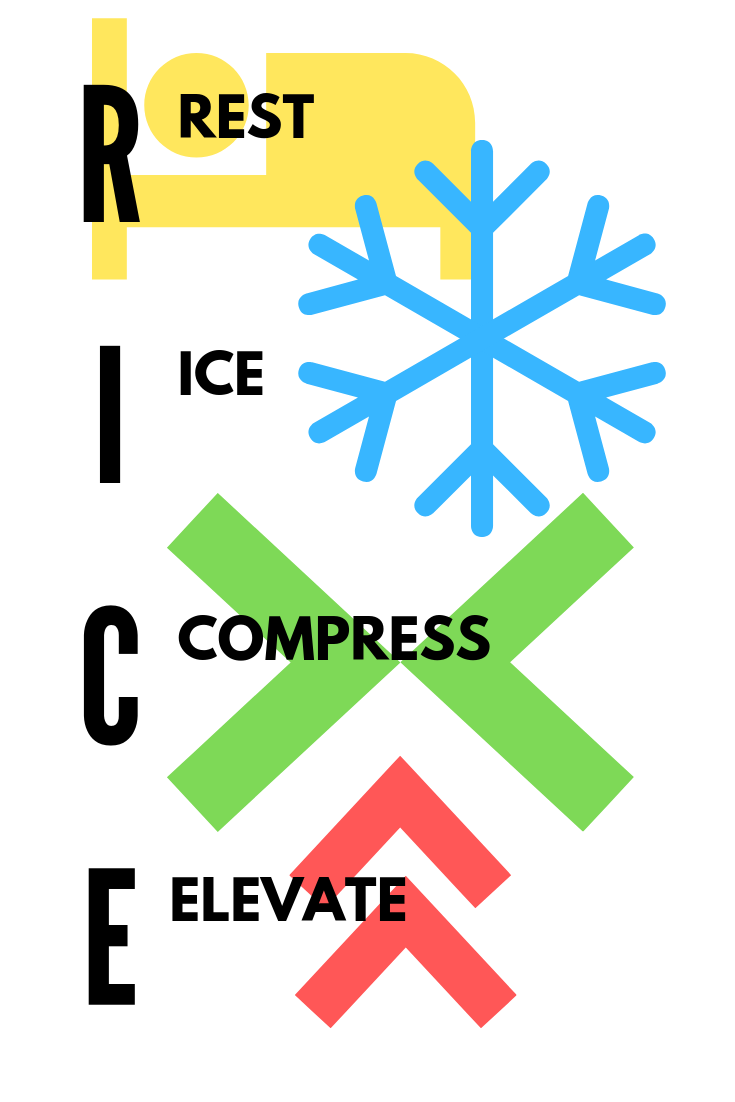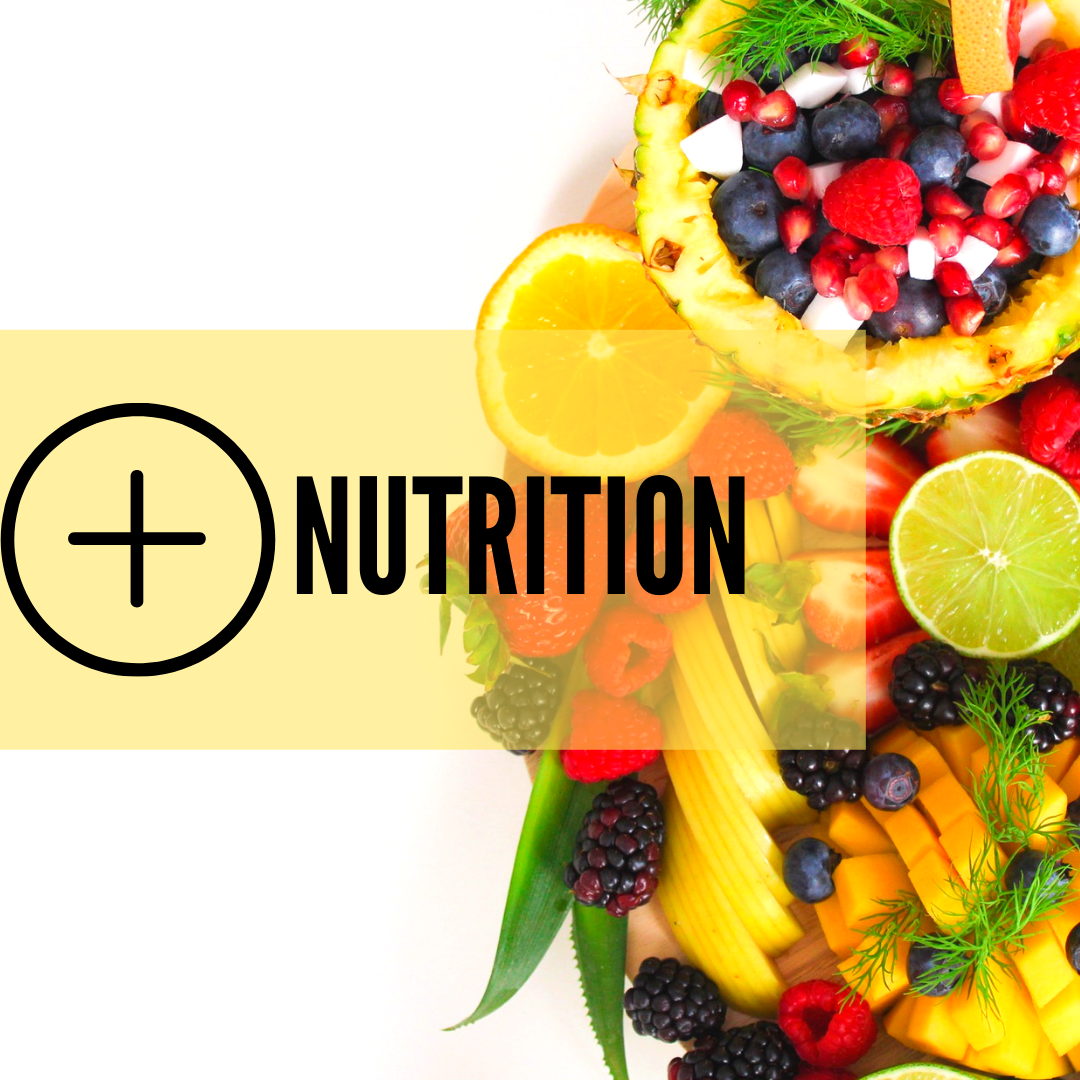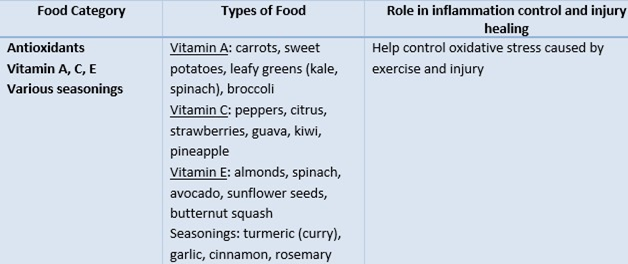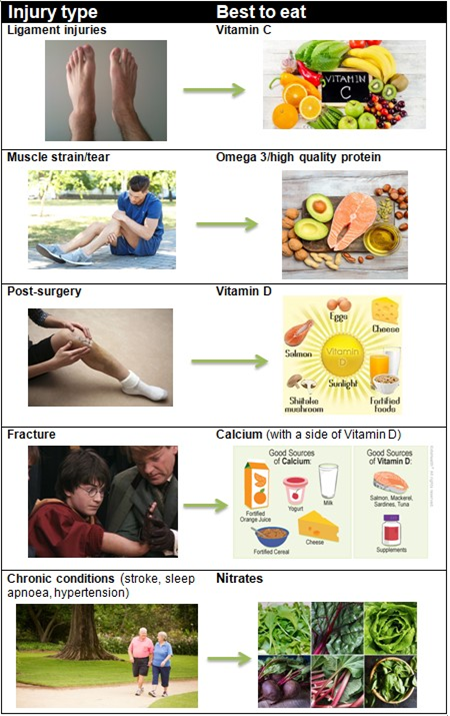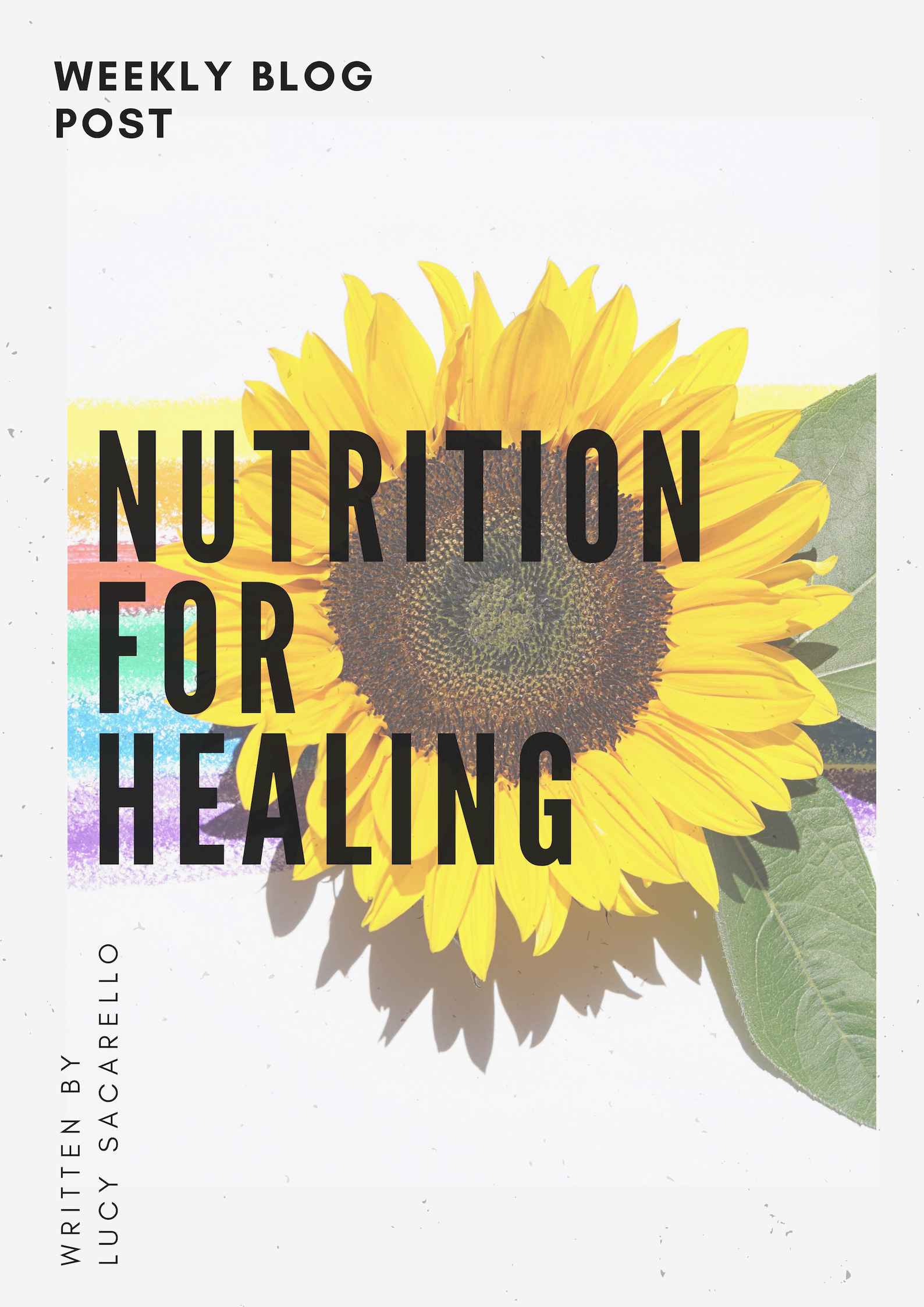
We use a number of recovery methods including physiotherapy, massage, medication, stretching, strengthening and surgery however very few of us will consider our diet. We are often asked what can be done in terms of diet to help the healing process and there is lots of misleading information out there. Most importantly we don’t want to underestimate the importance of healing on the inside as a tool to complement everything that we are doing physically.
Inflammation = the body’s natural response to injury.
This reaction is fundamental to our health for two reasons; (1) it highlights foreign or potentially harmful substances and prevents further tissue damage and (2) it attracts our white blood cells that serve to remove germs or damaged cells from the area helping the healing process.
So if inflammation is a positive thing, why do we use strategies to reduce it?
Sometimes the body’s response can be excessive or prolonged for example someone who is 6 weeks after an ankle sprain yet still experiencing reduced movement or persistent pain. There are many ways to reduce the potentially unnecessary inflammation and these include the methods we are familiar with; anti-inflammatory medication, massage, taping, exercise, resting, icing, elevating and compressing. A technique less often considered however is these strategies in combination with your nutrition.
Most of the products that add value to our healing are amongst our daily food intake. Below I’ve discussed only a handful that we can consider as adjuncts to the healing process.
Anti-inflammatory Foods
- Antioxidants
Reactive Oxygen Species (ROS) are a byproduct of cell breakdown. Following an injury or a long period of intense exercise without correct recovery, high amounts of ROS are produced within the body. Antioxidants can serve to counteract this build-up of ROS by breaking down ROS à less harmful substances that are no longer damaging to cells. This results in a faster recovery rate as well as a reduced injury risk.
- Vitamin C
Vitamin-C rich foods play a part to prevent chronic inflammation and the negative impact it can have on recovery. They also more importantly help the body produce collagen which is a vital rebuilding tissue following injury. Some examples of these foods are shown in the table below.
- Protein
Protein is well renowned for its role in building or rebuilding muscle tissues in the body. Following an injury, reduced activity often results in a decline in muscle mass and therefore strength. To combat this, an increase of protein in your diet can be useful.
- Nitrates
Ultimately, nitrate rich foods have been shown to decrease blood pressure, increase blood flow to the brain and improve one’s energy efficiency. In terms of their impact on healing, nitrates are one of the most efficient ways to enhance exercise performance and recovery as they facilitate an increase in our energy levels without increasing levels of oxygen consumption. Put simply this means more healing and work can occur with the same amount of oxygen.
- Anthocyanin
The vibrant colour found in fruit and vegetables is due to the vitamins and minerals they contain. The naturally purple or blue pigment in foods is due to their high levels of anthocyanin (a type of antioxidant), which has been proven to reduce inflammation and benefit many chronic inflammatory conditions.
- Vitamin D
Vitamin-D has been shown to increase an individual’s chances of a good recovery from surgery. This vitamin also helps the body absorb calcium from food intake making it (along with calcium) particularly important for recovery from fractures.
- Omega 3
Omega-3 fatty acids have been proven to speed up your recovery by limiting excessive or prolonged inflammation. Omega-6 fats on the other hand have been shown to promote inflammation (especially when omega-3 fatty acids is low). Examples of omega 3 foods are shown below;
Inflammatory Foods
Although I have mentioned plenty of foods with benefits to reduce inflammatory levels, we must also be aware of those that can be detrimental to the healing process.
We are hugely aware of foods that are high in saturated fats, salts, sugar and preservatives that can increase your chances of developing various chronic diseases. Based on this same theory, these foods can similarly contribute to the development or retention of chronic inflammation following an injury and as a result delay recovery.
This is just a general list and not exhaustive but it shows that we can take little steps through dietary changes to facilitate our recovery. Obviously a balanced diet that supplies the body with healthy nutrients is best for the body’s tissues in ensuring they work optimally.
Written by Senior Chartered Physiotherapist, Lucy Sacarello.





